
CalPhotos Malaclemys terrapin terrapin; Northern Diamondback Terrapin
Malaclemys terrapin occurs along parts of the eastern coast of the United States from as far north as Cape Cod, Massachusetts, to the southernmost Florida Keys. The turtles are also abundant in the Gulf Coast, from Florida to Texas. (Loutrell and Cornett 1993). Biogeographic Regions nearctic native atlantic ocean native Habitat
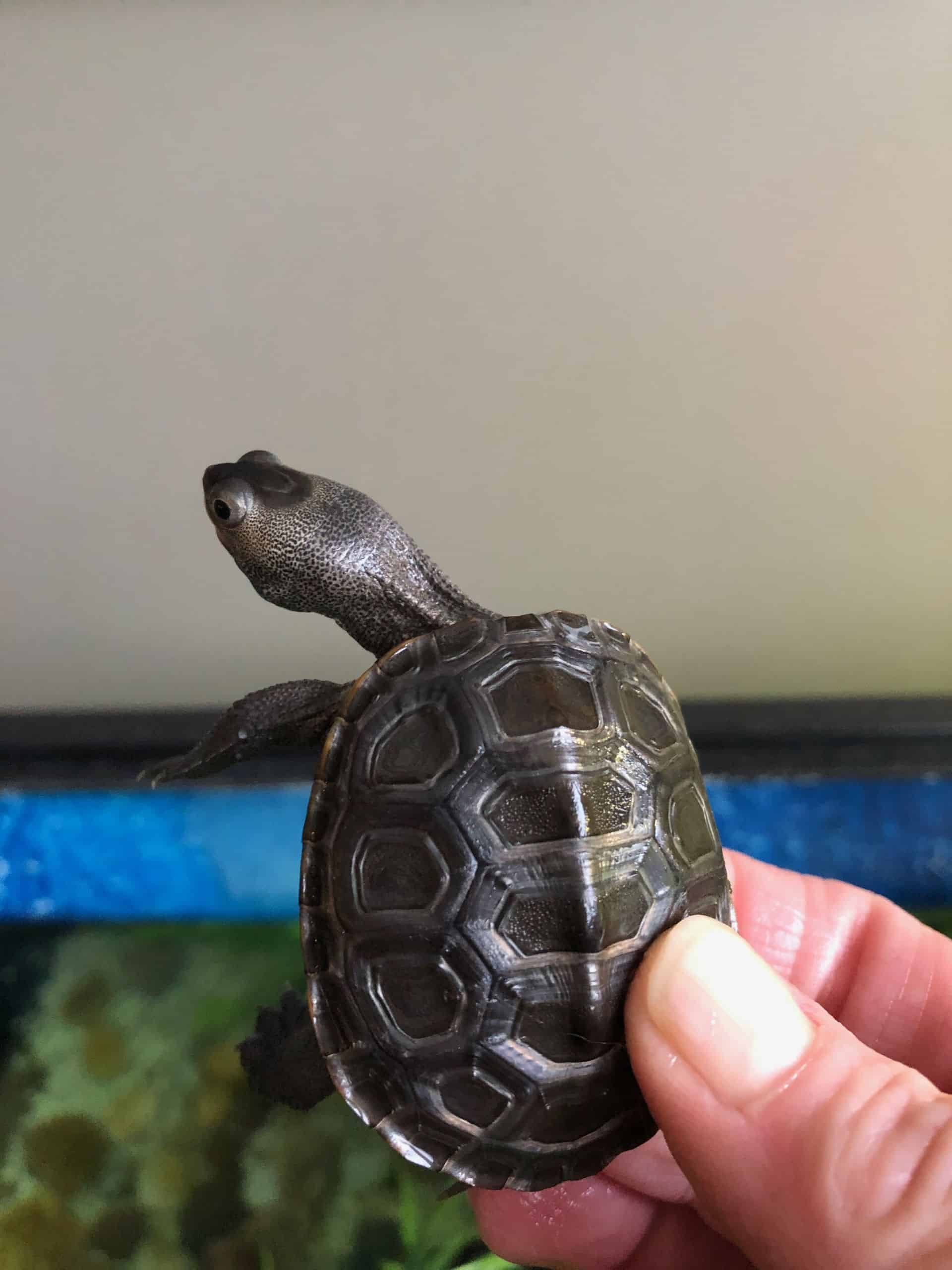
Northern Malaclemys Terrapin Terrapin
The Diamondback Terrapin ( Malaclemys terrapin) was made the State reptile and official mascot of the University of Maryland College Park in 1994 (Chapter 476, Acts of 1994; Code General Provisions Article, sec. 7-309). As mascot (also known as Testudo ), the Terrapin, however, has been affiliated with the University's athletic program since 1933.

Flickriver Photoset 'Diamondback Terrapin (Malaclemys terrapin)' by
Description: The Diamondback Terrapin ( Malaclemys terrapin) ranges from 5-10 inches (12.7-25.4 cm) in carapace length. Terrapins are sexually dimorphic, with males being much smaller (5-6 in), while females are considerably larger (9 in) as adults. There are currently seven subspecies of diamondback terrapin recognized throughout it's large range.
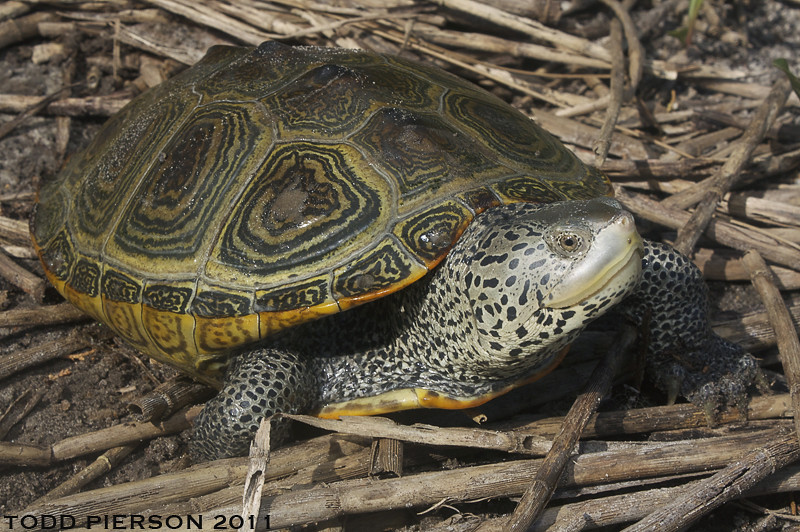
Malaclemys terrapin Diamondback Terrapin An adult female … Flickr
Malaclemys terrapin Subspecies Malaclemys terrapin terrapin Identification Numbers TSN: 173781 Geography Launch Interactive Map + − Leaflet | Powered by Esri | Open Street Map, US FWS Timeline Explore the information available for this taxon's timeline.
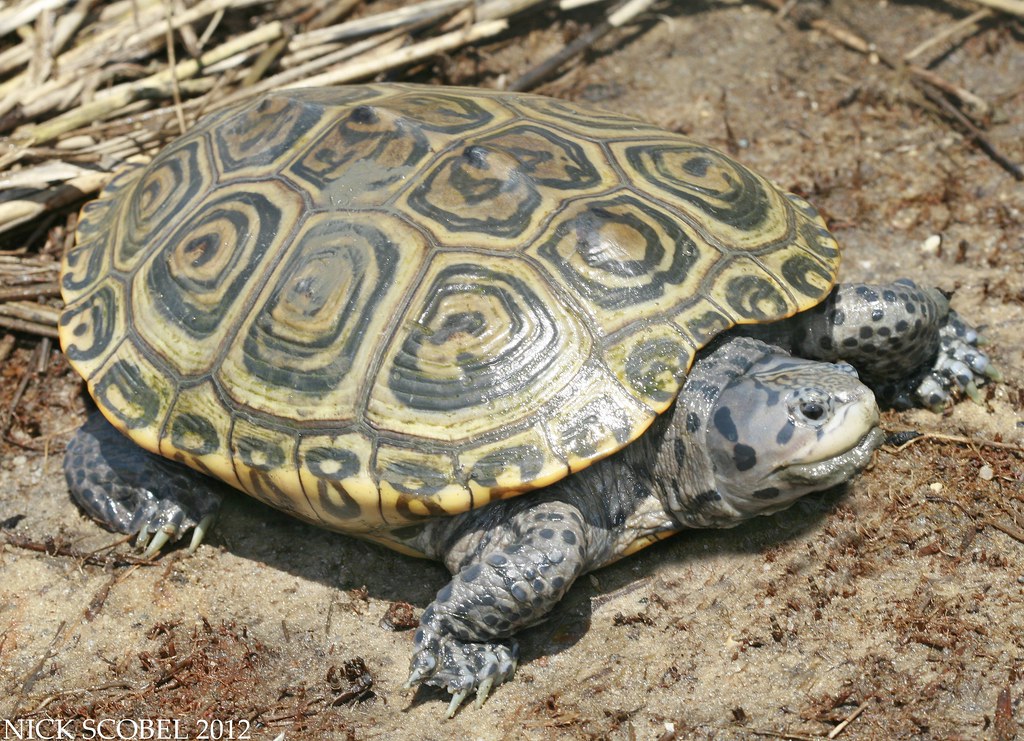
Northern Diamondback Terrapin Malaclemys terrapin terrapin… Flickr
Malaclemys terrapin terrapin (common name is Northern diamondback terrapin). Northerns can be found from Cape Cod, Massachusetts to Cape Hatteras, North Carolina. Northerns have the most varied color patterns of all the subspecies. It can be impossible to positively identify some of them just by looking at them.

ornate diamondback terrapin, Malaclemys terrapin ssp. macrospilota
Diamondback terrapins (Malaclemys terrapin) are the only turtle in the U.S. that lives exclusively in brackish saltwater marshes, coastal bays and lagoons from Cape Cod, MA, to Corpus Christi, TX. Of the seven subspecies of diamondback terrapins, the northern diamondback (Malaclemys terrapin terrapin) is found in Virginia.

Diamondback Terrapin (Malaclemys terrapin) {!다이아몬드거북>; Image ONLY
Malaclemys terrapin Type: Reptiles Diet: Carnivore Average Life Span In The Wild: 40 years Size: Males 5.5 inches; females, 11 inches IUCN Red List Status: Vulnerable LC NT VU EN CR EW EX Least.

Carolina Diamondback Terrapin Malaclemys Terrapin Centrata Stock Photo
Distribution This species is found from Louisiana to Corpus Christi Bay. Other Texas diamondback terrapins were once hunted to the brink of extinction because many people thought that they were especially delicious in soup. Some believe that Prohibition helped save terrapins. Turtle soup was made with wine during the 1920s.

Female Malaclemys terrapin terrapin with two Crassostrea virginica
Florida has five subspecies of the diamondback terrapin: the Mississippi Diamondback Terrapin (Malaclemys t. pileata), the Ornate Diamondback Terrapin (M. t. macrospilota), the Mangrove Diamondback Terrapin (M. t.rhizophorarum), the Eastern Florida Diamondback Terrapin (M. t. tequesta), and the Carolina Diamondback Terrapin (M. t. centrata),

Diamondback Terrapin Facts and Pictures Reptile Fact
Diamondback Terrapin Scientific Name: Malaclemys Terrapin Life Span: Around 30 years Mass: Around 300 grams Length: 5 inches (males); 9 inches (females) Clutch Size: 4 to 22 eggs. How to Care for Diamondback Terrapin as a Pet. Terrapins usually need brackish, or slightly salty water while in captivity. This is to mimic their environment in.

Florida Petition Seeks to Protect Diamondback Terrapin Turtles From
Conservation Status: Size: Female terrapins are larger than males and average around 6-9 inches long while males average between 4.5-5 inches in length. Life Span: averages between 25-40 years in the wild, and possibly longer in captivity. Habitat: The diamond-backed terrapin is the only exclusively estuarine turtle species in North America.
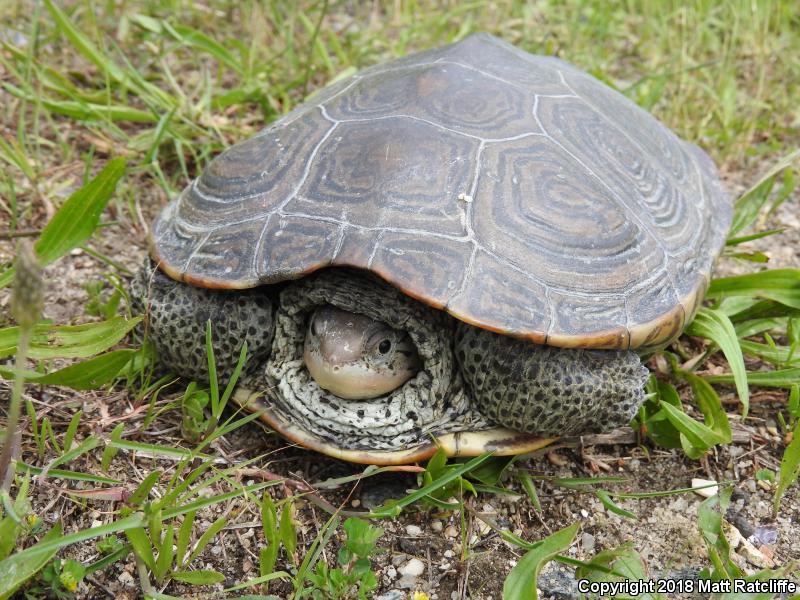
Northern Diamondbacked Terrapin (Malaclemys terrapin terrapin)
RANGE: The Northern Diamond-backed Terrapin (Malaclemys terrapin terrapin) is found along the Atlantic coast from Massachusetts south to Florida and along the Gulf coast from the Carolinas to Texas. LIFE CYCLE & BEHAVIOR: Northern Diamond-backed Terrapins overwinter in the bottom of estuaries, creeks and salt marsh channels.

Diamondbacked Terrapin South Carolina Partners in Amphibian and
The diamondback terrapin or simply terrapin ( Malaclemys terrapin) is a species of turtle native to the brackish coastal tidal marshes of the East Coast of the United States and the Gulf of Mexico coast, as well as in Bermuda. [6] It belongs to the monotypic genus Malaclemys.

Diamondback Terrapin (Malaclemys terrapin centrata / Malaclemys
Road mortality and nest predation are well-documented threats to Diamond-backed Terrapins (Malaclemys terrapin) across the majority of their range, including the 8.7-km causeway to Jekyll Island, Georgia, USA, where both are predicted to contribute to population declines if left unmitigated. From 2009 to 2014, we used intensive road surveying.
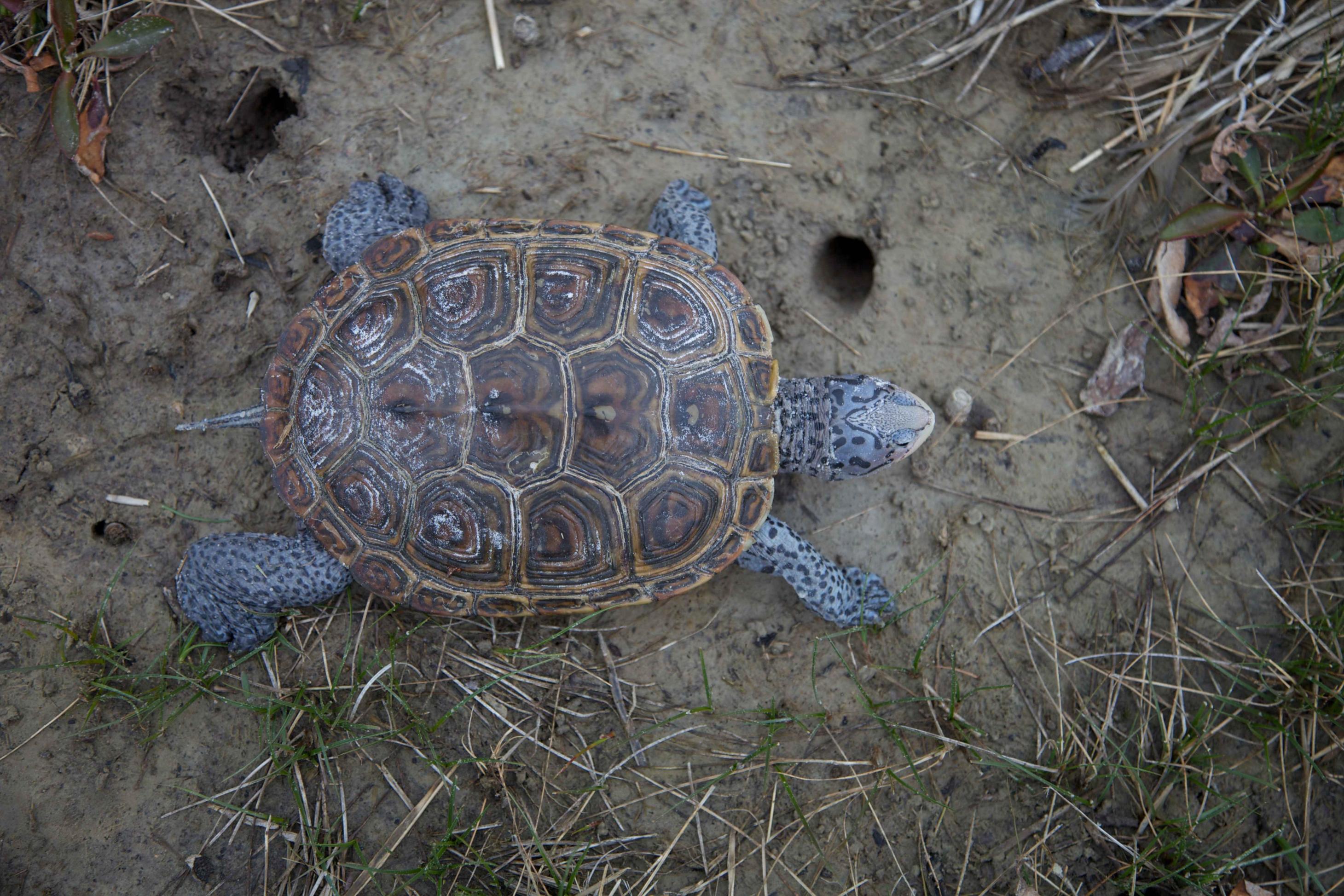
Free picture malaclemys, terrapin, diamondback, terrapin, turtle, animal
Diamondback terrapins (Malaclemys terrapin) are listed as Vulnerable by the IUCN Red List Index of Threatened Species. Among the challenges terrapins encounter are habitat loss due to coastal development and sea level rise, mortality at all life stages by mammalian and avian predators, road mortality, boat strikes, harvest for the pet trade, and drowning in crab traps. The primary objective of.
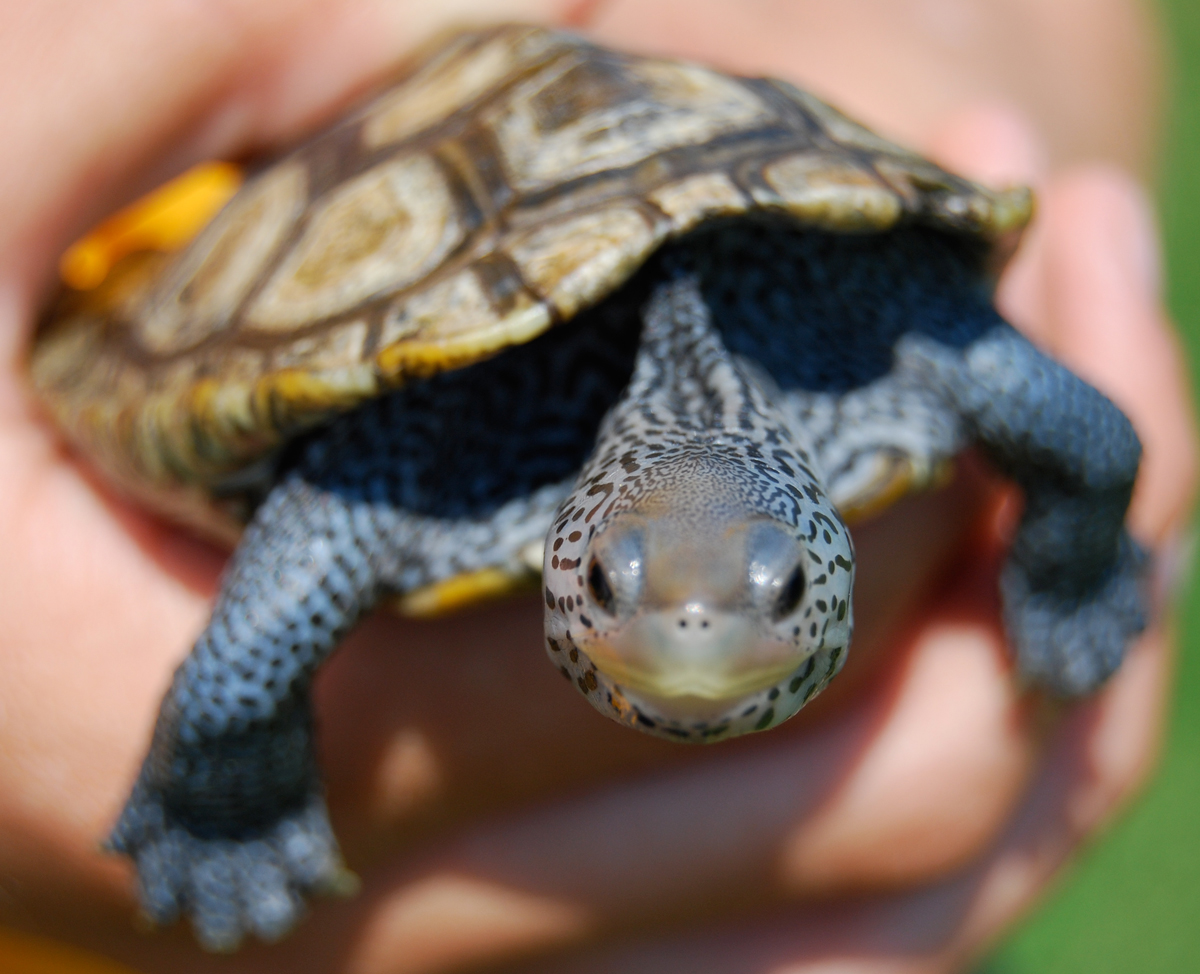
25 Years of Terrapin Conservation and Research
The diamondback terrapin (Malaclemys terrapin) is a small estuarine turtle distributed along the Atlantic and Gulf Coasts of the USA that is threatened by drowning in crab pots, road mortality, exploitation in the pet trade, and habitat loss. Little is known about the movement patterns and home ranges of these turtles, particularly along the U.S. Gulf of Mexico coast.